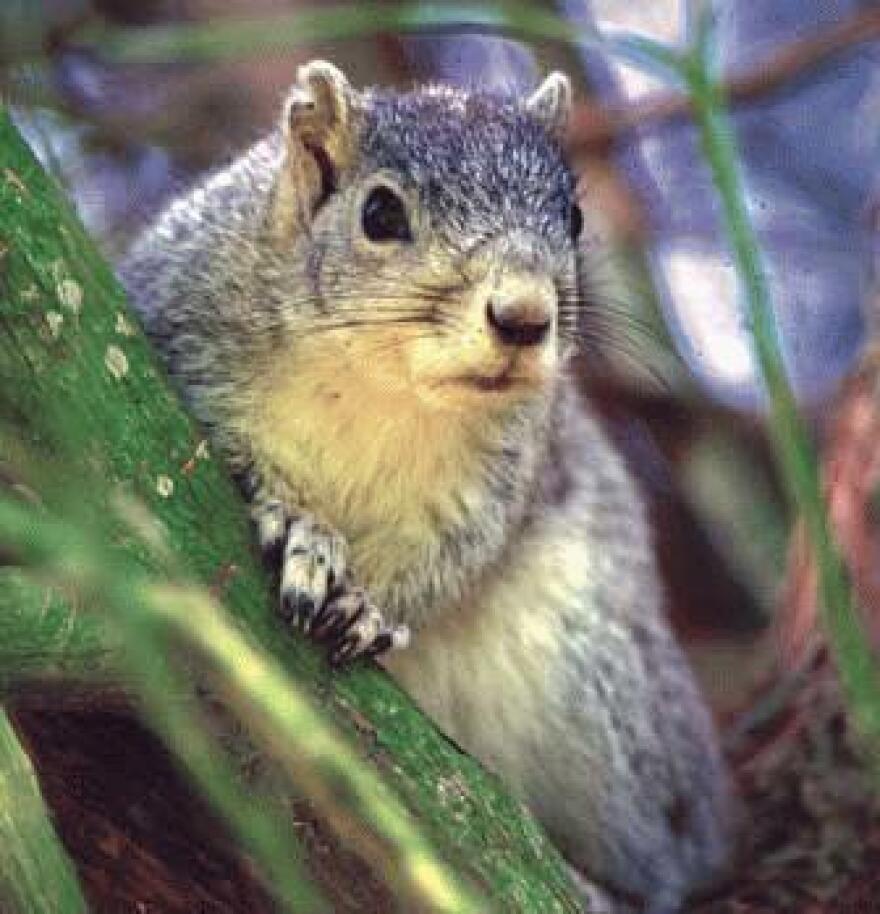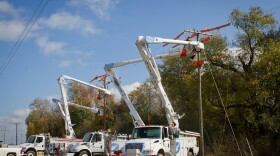In 1967, when the U.S. Fish and Wildlife Service created the first endangered species list, the Eastern Shore's Delmarva Peninsula fox squirrel was there among better known species like the bald eagle and Florida manatee.
A combination of clear-cutting of old growth forests and hunting contributed to its near extinction. Today, the Service officially removed the squirrel from its federally protected designation.
Delmarva fox squirrels are the country cousins of the gray squirrel only bigger with a wider head, short stubby ears and a much longer fluffier tail. They don't like to move, preferring to live out their lives quietly in a forest on the peninsula. To boost the population, some were translocated across DelMarVa, onto private lands and federal refuges. Eighty-five-year-old Guy Willey, now retired from Fish and Wildlife Service, spent nearly 40 years relocating and fostering the comeback of the squirrel. To do it required partners.
“So we had to go to the landowners in Dorchester, which had probably 80 percent of all the squirrels in the Delmarva population. At first they were very, very reluctant to deal with Fish and Wildlife.”
Not by chance, Willey was from Dorchester and knew many of the landowners so he was sent to negotiate. After that, it took ten years for Willey along with a team to trap and translocate squirrels throughout the peninsula. But the squirrels were brought to Virginia even before that.
“In the 60s we put squirrels on Chincoteague Island, down on the refuge at before they were on the endangered list. The manager lived in the house right near the lighthouse, they fed them there for several months and they took hold on the island.”
Cherry Keller, Fish and Wildlife recovery team leader for the squirrel, says there are roughly 20,000 squirrels, living mainly on the Maryland part of the peninsula. Some recently crossed into Delaware.
“We had some new squirrels discovered in the Nanticoke Wildlife Management Area, which is just across the Maryland line. Those were the first squirrels to arrive in Delaware that didn't arrive there by truck.”
The best places to spot the squirrel are in National Wildlife Refuges like Delaware's Prime Hook, Virginia's Chincoteague, and Maryland's Blackwater. And, while they tend to come out between 10 and 2 in the afternoon, you may never see one.
“They're hard to find. They're not terribly vocal, their not terribly noisy, they just don't appear in obvious areas. You can have a really abundant population, and we know they're abundant because we've been trapping them there, and you can walk through that wood and still not see a single one. They tend to be quiet and cryptic and they'll see you before you see them.”
Virginia and Delaware will continue to list the species as endangered while Maryland will list it as a species of conservation concern. Perhaps the biggest threat to them now are vehicles traveling the roads within the refuges.





